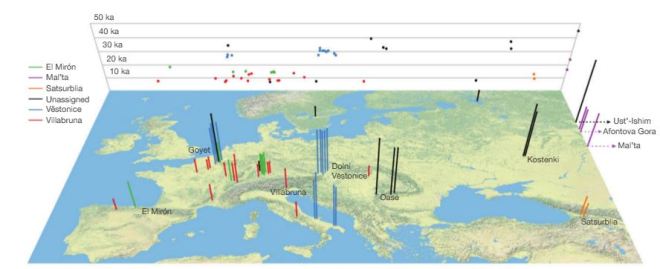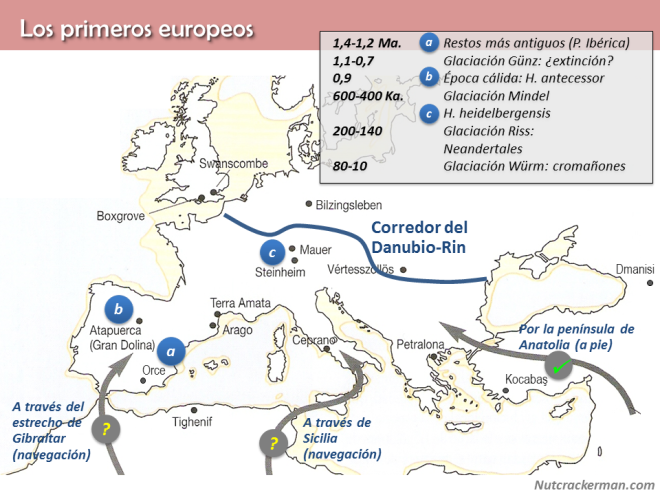In 2002 the robust jaw of an adult male human, Oase-1, was found in Peștera cu Oase (‘the cave with bones’) in southwestern Romania. It was dated to 38-42 ka, which falls among the oldest European early Upper Paleolithic human remains, together with Grotta del Cavallo (43-45 ka), Kent’s Cavern 4 in UK (41-44 ka), Mladeč in Czech Republic (34 ka), Vogelherd in Germany (32-33 ka)… and overlaps the late surviving neandertals.
The morphology of the Oase-1 mandible presents a very interesting hybrid combination of derived and archaic traits:
Within the range of early modern humans in the Late Pleistocene:
- A key feature of this fossil is the tuber symphyseos, a prominent triangular bulge occupying the inferior half of the anterior symphysis. This is a derived early modern human feature, which is clearly present in Oase-1.
- Apart from its overall proportions, other traits reinforcing its classification as modern human are: more mesial mental foramen, narrow lateral corpus, retromolar space absence, symmetrical mandibular notch and medially placed condyle.



